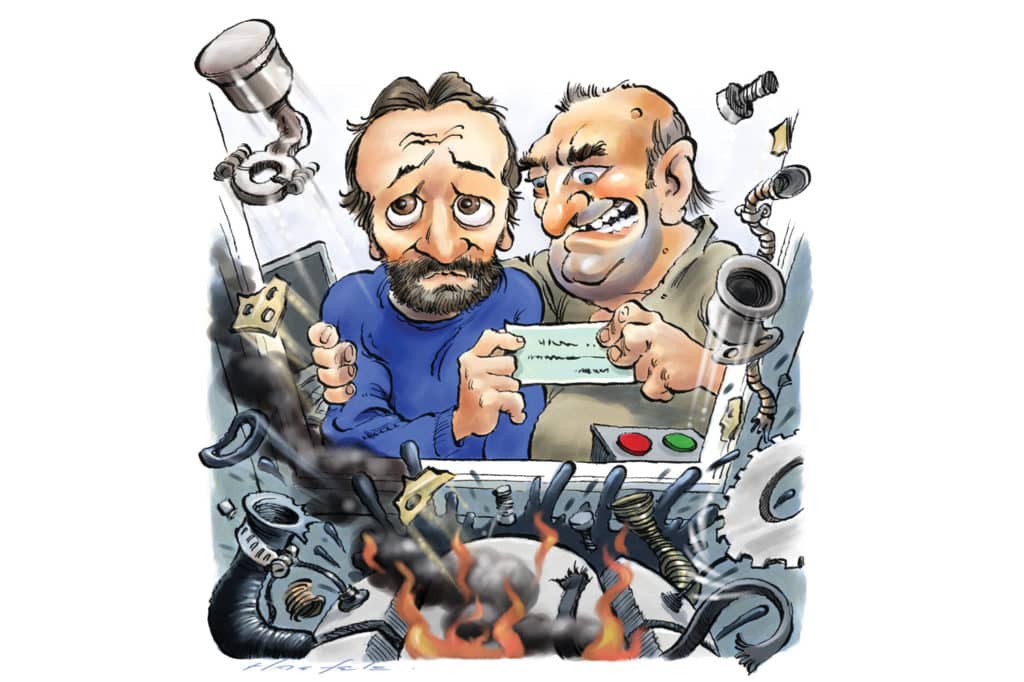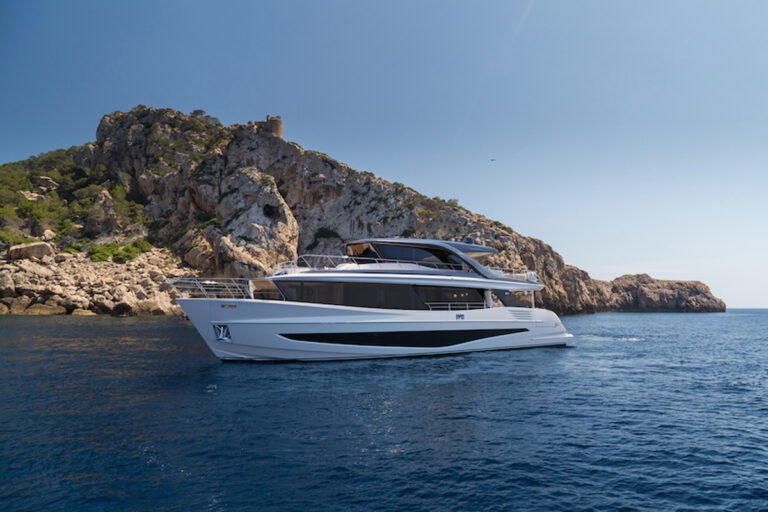
As I studied the images from the other side of the planet, I thought of my last chat with my pal Bill. “It’s a milestone. There are important decisions to be made. I must go,” he insisted prior to embarking on a 24-hour flight to the shipyard responsible for his new build.
“It’s like attending a school play,” I joked. (I knew better.)
Milestone moments in yachting, like the one Bill was attending, do not mark feats of technical innovation or give honorable mentions for the fastest, longest or most expensive hulls. They are, instead, a series of celebratory moments during a yacht’s construction when the owner agrees to write a check. They’re typically spelled out in a contract and are anticipated much like the birth of a child. At least by the builder.
“I wanna see what I’m paying for, in person,” Bill said, arguing the other side.
I’ve attended such milestones as a designer, and I admit that I often went to collect a check. However, on occasion, I served an owner as a witness. Fiberglass hulls burped from tooling. Aluminum hulls rolled from their bellies to their bottoms. The delivery of engines. The mating of hulls and superstructures. I’ve seen it all—mostly all good; however, when things sour, standing between a payment and a yacht builder can be unpleasant.
In the 1980s, I was asked to observe the testing of a custom-built, 16-cylinder diesel in a seedy industrial area the owner did not wish to visit. My mission was to confirm that the engine produced the horsepower claimed. A dynamometer would offer proof, and a check would follow. The engine was bolted to the “dyno” (basically a large, hydraulic brake) and prepped for blastoff with fuel, water, air and exhaust plumbing.
Hiding in a control room behind a bulletproof-glass barrier, the builder pushed a green start button, and then nervously applied throttle and load. A clock-size gauge on the wall shot upward: 200 hp short. He gave it another go, but this time the engine went to pieces. There was no need to push the red stop button. The builder and I looked at the remains, and then at each other. It was an uncomfortable moment. I recall feeling sorry for him, but then again, I was suffering the onset of Stockholm syndrome.
I thought of the experience as I reviewed a shot of Bill’s hull swaddled in a cradle on the shop floor. The superstructure sat nearby.
“What do ya think, Coyle? Looks great, doesn’t she?” Bill gushed.
“Her sheer sweep is perfect and not a freckle. Wonderful,” I offered.
In truth, new construction shots are like baby pictures. I have yet to see one quite as perfect as the ones penned on Gerber baby-chow jars.
But, at Bill’s insistence, I considered the last image: the head compartment still on the shop floor. Bill was sitting on a box where the water closet would be plumbed, to offer scale.
“Ahhh…plenty of ventilation?” I quipped.
“Don’t BS me, Coyle. What do you really think?” he asked.
“OK,” I said. “In my opinion, the builder wants a check.”









